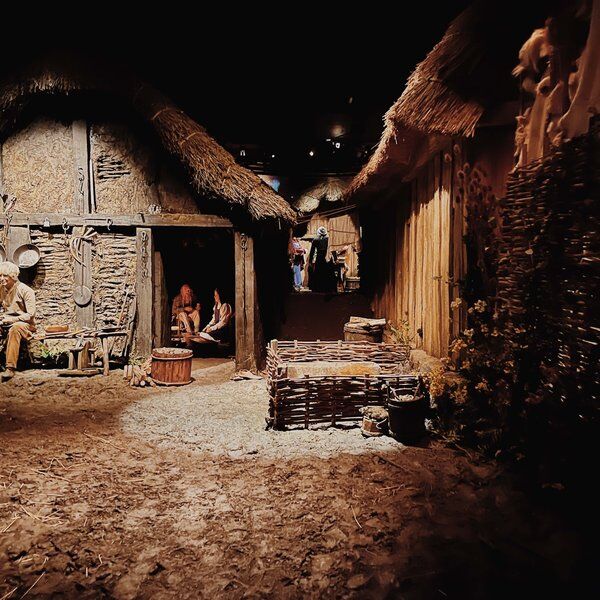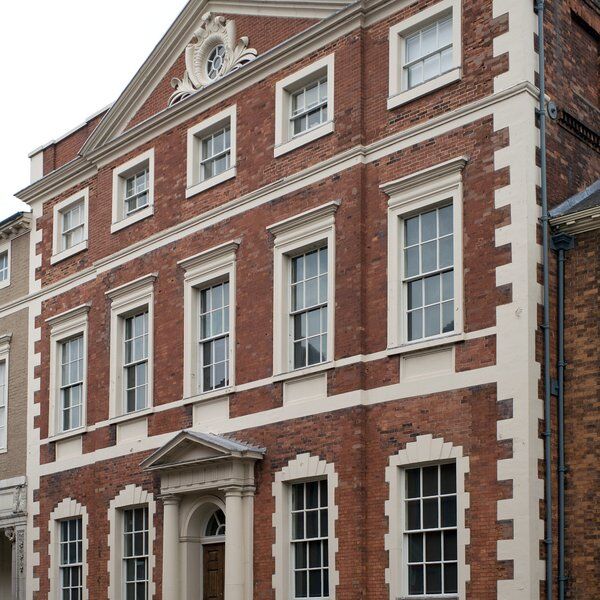Dick Turpin’s Grave: A Macabre Mystery
Nestled in the charming city of York lies a grave that has captivated the imagination of history enthusiasts and English folktale lovers alike: Dick Turpin’s grave.
The final resting place of one of England’s most infamous 18th-century highwaymen, Dick Turpin, has long been a source of mystery, controversy and intrigue. On the one hand, Turpin was undoubtedly a violent criminal who caused a lot of trouble throughout his relatively short life. On the other, some say Turpin suffered a miscarriage of justice and his story has lived on for centuries. Either way, Turpin’s “final” resting place has become a significant landmark for visitors to York.
The tombstone, etched with the words “Richard Turpin, York’s Most Famous Highwayman, Executed 1739, remains to this day in the churchyard of St George’s Church in York - but the story of Dick Turpin’s grave is a tale almost as gruesome as that of Turpin’s life.
The History of Dick Turpin’s Grave

On the 22nd of April 1739, a huge crowd turned out to see the notorious highwayman Dick Turpin meet his grim fate at the gallows in York.
Following his trial, which was held at York Castle, Turpin was convicted of various crimes including horse theft and highway robbery. According to contemporary newspaper reports, Turpin “bowed to the spectators as he passed” and confessed to a murder he had committed, but also denied some of the accusations that had been levelled at him, stating he had no knowledge of them.
The Newcastle Courant describes Turpin’s final moments, in which he mounted the ladder “with undaunted courage” and then “threw himself off and expired within five minutes”. Turpin’s body was taken to a grave and laid to rest in the churchyard of St George’s Church. According to the same newspaper report, at about 3 o’clock in the morning the day after Turpin had been buried, Turpin’s corpse was exhumed but an angry mob promptly brought the body back from a nearby garden and reburied him. The article also states that the original temporary tombstone read: “J. P, 1739, R.T, aged 28”.
The headstone marking Turpin’s purported final resting place has attracted countless visitors ever since he was first laid to rest. Dick Turpin's grave has come to represent more than just a gravesite: it’s a relic of a bygone era when highwaymen terrorised the English countryside.
However, like with so many historical legends, the authenticity of Dick Turpin’s grave has been a subject of debate and met with scepticism. Undoubtedly, the headstone claims that the body that lies beneath it is that of Richard Turpin, but some historians have argued that there are inconsistencies in the historical records.
The Legend of Dick Turpin
To fully appreciate the intrigue surrounding Dick Turpin's grave, it is essential to delve into the life and legend of this notorious highwayman.
Who Was Dick Turpin?
Born in Thaxted, Essex in 1705, Richard Turpin was the son of a butcher and grew up in a modest family. He attended school and was literate (he was identified at his trial by an old schoolmaster called Smith from Essex, who testified that he had taught young Dick Turpin how to write). Given this moderately privileged upbringing, there were no indications that the young Turpin would go down as one of the most infamous criminals in English history.
However, Turpin’s descent into a life of crime began when he joined a gang of deer thieves in Epping Forest. His criminal activities escalated from petty thefts to horse theft, a crime that was then punishable by death, culminating with a series of well-publicised highway robberies across Southern England during the 1730s.
One of the most infamous episodes in Turpin’s criminal career was his involvement in the theft of a horse in 1737 which led to his eventual capture. During the theft, he shot and killed a man named Thomas Morris, a servant of one of Epping Forest’s keepers.
The Derby Mercury, along with other major national newspapers, released this description of Turpin along with a reward for his capture:
“The said Richard Turpin was born at Thaxted in the county of Essex, is about 30 years of age, by trade a butcher, about 5 feet 9 inches high, of a brown complexion, very much marked by smallpox, his cheekbones broad, his face thinner towards the bottom, his visage short, pretty upright and broad about the shoulders.”
Turpin's Capture, Trial, and Execution

Following the murder of Thomas Morris in Essex, Turpin went on the run and assumed a new identity. He chose his father’s first name, John, and his mother’s maiden name, Palmer - which, in hindsight, wasn’t a great choice.
“John Palmer” (aka Dick Turpin) moved between Lincolnshire and Yorkshire to avoid suspicion. However, he continued to steal horses and commit other crimes which didn’t go unnoticed by local magistrates.
During a visit to Brough, just outside of Hull, Yorkshire, Turpin made a fatal mistake: he shot and killed a fowl belonging to a local man who had witnesses. The magistrates imprisoned “John Palmer” in Beverly, Yorkshire, while they made investigations. Although many locals recognised the name “Palmer”, nobody could tell them what his trade was: despite “living like a gentleman”, “Palmer” wasn’t a butcher from Long Sutton as Turpin had said he was.
Shortly before the incident, “John Palmer” had stolen yet another horse - this time from Thomas Creasey. Creasey found his missing horse (and a foal that had also gone missing) in a field near Beverley where “Palmer” was imprisoned. The magistrates learned of Creasey’s stolen horses and the pieces began to fall together.
Dick Turpin’s reign of terror came to an end when he was arrested in 1739 for the aforementioned horse theft of Thomas Creasey. He was tried at York Assizes and found guilty of his crimes. His execution took place at Knavesmire, also known as York Tyburn on 7 April 1739. Interestingly, a third of the jury who convicted Turpin was called William.
Dick Turpin’s Grave: A Legend That Lives On
At the time of his execution, Dick Turpin was probably one of the most hated men in England. His capture in York fuelled the already existing “north versus south divide”, evidenced by this epigram sent in anonymously to the Derby Mercury, titled “He bowed to the spectators as he passed”:
“Full oft the South has sneered our Northern Clime,
And Horse-Stealing been called a Country Crime,
But now no longer we will bear such jokes
This rogue is theirs; and we the honest folks
Of knaves and fools we don’t say we have neither,
But knave and fool are seldom found together.
Our purer Northern Air’s too sharp by half,
A Yorkshire Tike has bit this Essex Calf,
This dull-bred Rogue has found it to his cost,
A fish out its Element is lost.”
How to Visit Dick Turpin's Grave
You’ll find Dick Turpin’s grave situated in the heart of York on George Street, just a short walk away from the iconic York Minster, one of the city’s most famous landmarks. Dick Turpin’s grave lies in the churchyard of St George’s Church.
While the authenticity of the grave has been questioned, there’s no denying its significance as a historical and cultural landmark. Whether it is indeed the final resting place of Dick Turpin or not, the grave stands as a reminder of a time when highwaymen like Turpin roamed the countryside and spread terror throughout England.
A visit to Dick Turpin’s grave is a must-visit for those interested in the darker chapters of England’s past.
Ready to discover more of what York has to offer?
CityDays have FOUR outdoor treasure hunts in York to choose from, including our brand new trail Gourmet Xmas Food Hunt. All combine the fun of an escape room with the historic facts and whimsical trivia of a walking tour!
Take the stress out of planning your visit to York and book your adventure today!
Not visiting York this time? Don’t worry, you’ll find us all over the world.











